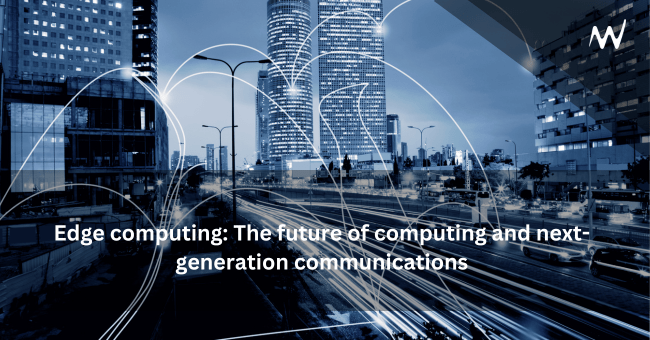- Home
- Edge computing: The future of computing and next-generation communications
Edge computing: The future of computing and next-generation communications

Edge computing: The future of computing and next-generation communications
You may have heard of cloud computing. In cloud computing, we simply execute functions such as data management, data storage, and data retrieval from other devices using a virtual network or the Internet. Today we will learn a little about edge computing and how it will be useful in the next generation of technology.
history?
In the 1990s, the mainstream concept of edge computing was captured when Akamai solved the challenge of congested web traffic by introducing a content delivery network (CDN) solution The technology includes network nodes that store fixed media over areas close to end users.
Today, edge computing takes this concept a step further, bringing computing power to the node at the network edge to process information and deliver services to the end user
What is edge computing?
Edge computers are enhanced cloud computing. Both are irreversible technologies that cannot replace each other. In edge computing, instead of being sent to the data center or main cloud, it is processed or analyzed by the device itself or by a local computing server Edge computing access at the customer’s end, such as the user’s computer , or IoT devices, or any edge server connected to the internet To be able to run the processes, here we bring the computation to the edge of the network to reduce remote connections between clients and servers. It reduces latency, bandwidth consumption, and stress on major computing servers that provide rapid real-time data processing. The important takeaway is that the network edge is geographically closer to the user’s machine as opposed to the origin server or cloud server.
Edge Computer
In edge computing, you need an external device or resource. Usually in cloud computing we see 2 servers at work, the cloud server and the user’s device. However, in edge computing we have 3 servers – there is another node between the end user’s machine and the cloud server called the edge device.
Applications?
Autonomous Vehicles: As edge computing technology can provide us with real-time information without delay, it will be really useful in self-driving cars where vehicle sensors or IOT devices require real-time information about traffic of the surrounding area. When deployed, autonomous vehicles can communicate and run seamlessly. It will help in efficient city traffic management.
In the field: Temperatures in fields collect valuable data, but that data is not analyzed or organized in real time. Edge devices can store, organize, preliminarily analyze that data, then deliver it to centralized applications or some form of long-term storage, in the cloud or on-premise This journey won’t be time-sensitive or slow , and because the data is thus preordered on the edge network hence the traffic to be sent Volume will decrease Edge computing advantage is faster response time for application needs. The downside could be a security concern since the data will be transmitted and analyzed systematically therefore, it is important to assure the security of the IoT device.
Many other applications can be made possible by edge computing such as, patient care in hospitals, traffic management, remote monitoring in the oil and gas industry, predictive maintenance and more
The challenges?
The current infrastructure of the network cannot support real-time data processing using IoT or edge devices. A robust network with many smaller base stations with higher wavelengths is needed for successful operation. We need accurate tools to provide the network and this is something we are moving towards in the next generation of 5G. Deploying a true 5G network is one of the challenges.
Another challenge is the safety of the input devices. To protect personal data or real-time information on edge devices, we need to introduce an advanced cybersecurity system that can be suitable for edge devices.
However, the need for on-demand computing, real-time data processing and the internet of things will increase the use of these technologies and this human brain will surely find a way to overcome these challenges on.
#EdgeComputing #NextGenTech #IoT #RealTimeProcessing #5GNetworks #Cybersecurity #SmartCities #AutonomousVehicles #DataAnalytics #TechInnovation
